I remember back when I first managed the ABM program for an enterprise software company. We were targeting some of the biggest, most complex organizations on the planet - think Fortune 100 banks, retailers, and manufacturers. At first, it seemed like a good idea to do what everyone else was doing. But as I dug into these accounts, I realized that if we wanted to capture their attention and win their business, we needed to speak their language and address their specific pain points. So we threw out the generic scripts and spent time really understanding each account's industry context, competitive landscape, and business objectives. Then we used those insights to create hyper-relevant content, messaging, and experiences that made our outreach feel like a natural extension of their world.
The results were profound. By tailoring our approach to the distinct needs of each vertical, we were able to build deeper relationships, credibility, and trust with key accounts. We saw response rates, meeting bookings, and pipeline numbers go through the roof. And most importantly, we drove a step-change in revenue growth from our top industry segments. Since then, I've applied this industry-specific ABM methodology in marketing consulting at companies in SaaS, professional services, financial services, and more. And I've honed a powerful framework anyone can use to create an ABM strategy laser-focused on their target vertical. I'm excited to share it with you today!
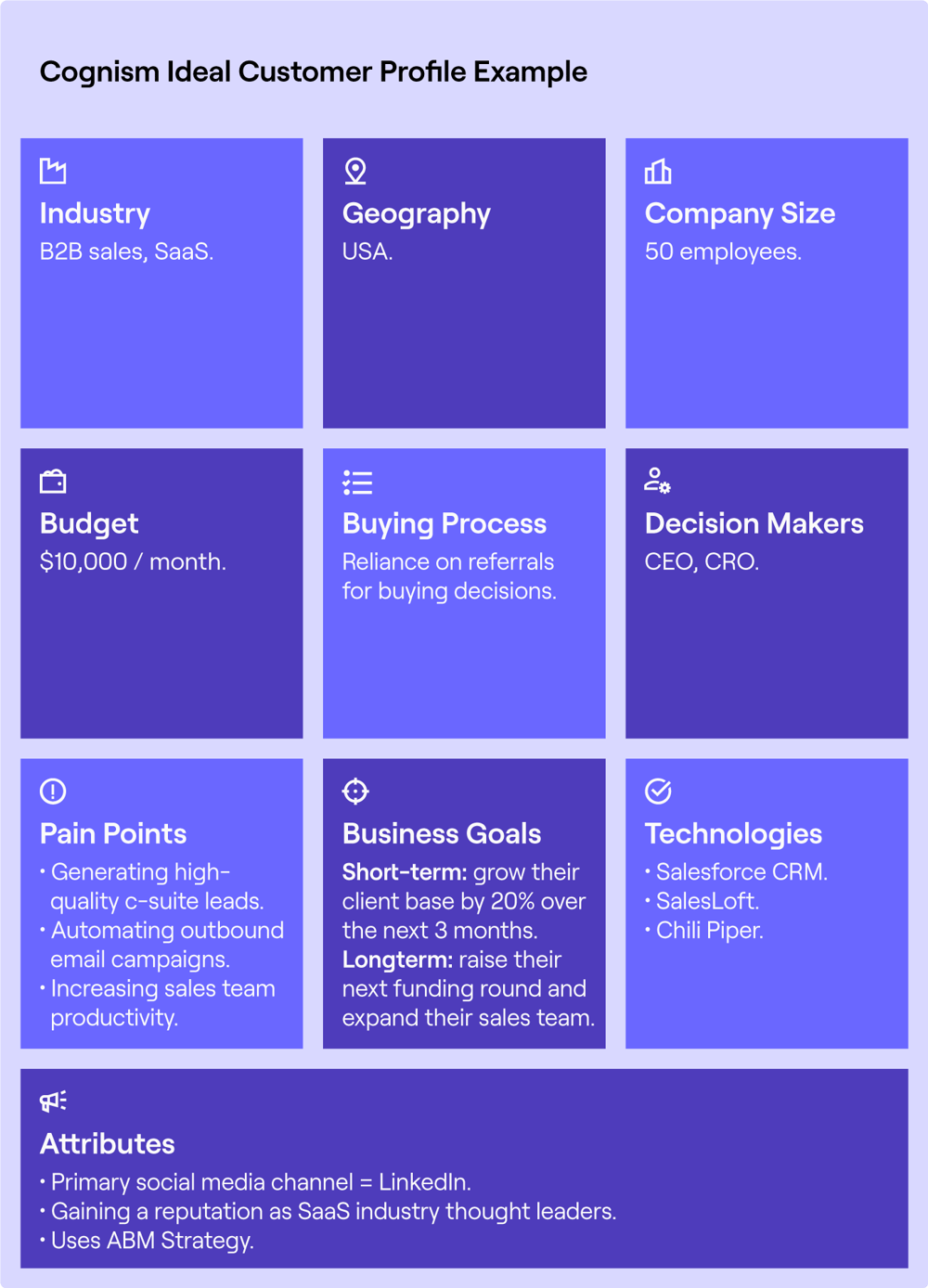
Identifying and Prioritizing Your Highest-Potential Accounts
Not all target accounts are created equal. To maximize the ROI of your ABM efforts, you need a systematic approach to identify and prioritize the prospects with the greatest revenue potential for your business. Start by analyzing your industry and market to pinpoint the segments and verticals that best align with your solution's value proposition and sweet spot.
Look for accounts that match your ideal customer profile (ICP) across key characteristics like industry, company size, growth rate, geographic markets, tech stack, and business model. Leverage intent data, web analytics, and other account signals to gauge buying stage and readiness. Tier accounts based on potential lifetime value, propensity to buy, and strategic importance.
| ABM Tier | Account Characteristics | Engagement Strategy |
|---|---|---|
| Tier 1 | - Perfect ICP fit - High revenue potential - Strong intent signals - Strategic importance |
- Dedicated account team - Highly customized content and plays - Executive-level outreach - Monthly account review meetings |
| Tier 2 | - Strong ICP fit - Moderate revenue potential - Some intent signals - Influence in industry |
- Targeted 1:1 campaigns - Personalized content and offers - Quarterly account review meetings |
| Tier 3 | - Partial ICP fit - Lower revenue potential - Limited intent signals |
- Lighter-touch, scalable plays - Industry-specific content - Bi-annual account review meetings |
For example, when DataDab managed marketing at a FinTech SaaS company, we targeted fast-growing midsize and enterprise financial institutions undergoing digital transformation. By combining ICP criteria with intent data showing spikes in relevant search activity, we identified and prioritized accounts actively researching financial management solutions. This enabled us to focus our ABM spend and effort on prospects most likely to convert to high-value, long-term customers.
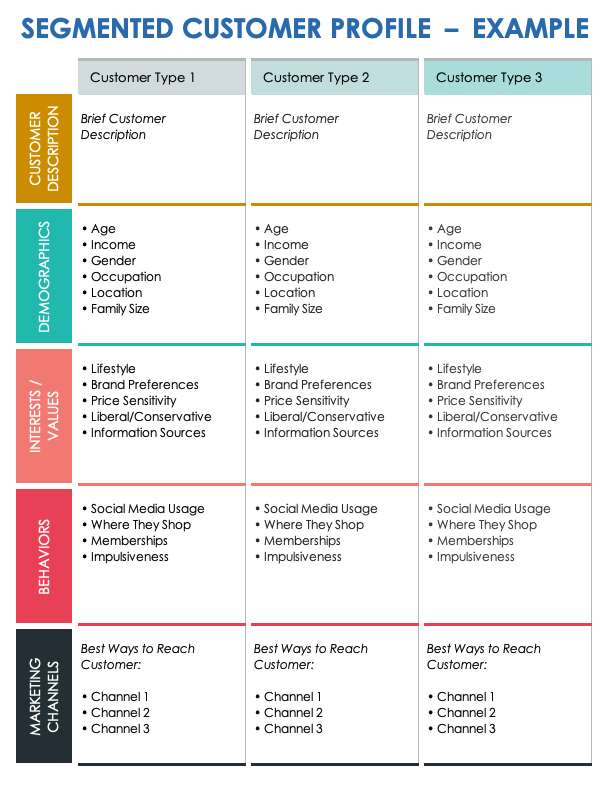
Developing Rich Account Insights and Targeted Messaging
In-depth account research and insight development is essential to creating hyper-relevant content and outreach that sparks engagement. Go beyond basic firmographic and technographic data to understand each target account's unique business priorities, challenges, and decision-making dynamics.
Interview your sales team, analyze account interactions, and scour the web to uncover key strategic initiatives, growth plans, org structure, competitive landscape, and buying triggers. Identify the goals, pain points, and motivations of each decision-maker and influencer in the buying group.
Then, craft messaging and value propositions that speak directly to the account's specific needs and objectives. Personalize content with relevant industry trends, use cases, and customer stories showcasing how you've helped similar companies succeed. Articulate a point of view on their market challenges and opportunities.
When I worked with a leading enterprise software vendor, we created detailed account dossiers for each ABM target, including custom-tailored talk tracks, content, and offers for different buyer personas. Our reps loved the deep account knowledge, and the personalized plays helped them quickly build trust and credibility with C-level execs at major industry players.
| Buying Stage | Target Persona | Marketing Channels | Content and Offers |
|---|---|---|---|
| Awareness | - CIO - VP of IT - IT Director |
- Targeted ads on industry sites - Sponsored content in industry publications - Social media influencer campaigns |
- Thought leadership articles - Industry trend reports - Infographics and videos |
| Consideration | - CFO - VP of Finance - Controller |
- Personalized email nurture sequences - Direct mail with account-specific offers - Webinars and virtual events |
- Case studies from similar companies - ROI calculators and assessments - Competitor comparison matrices |
| Decision | - CEO - COO - Chief Procurement Officer |
- Executive briefings and workshops - Proof of concept engagements - References and testimonials |
- Customized proposals and presentations - Executive-level value analysis - Tailored implementation and success plans |
Orchestrating Personalized, Cross-Channel Engagement
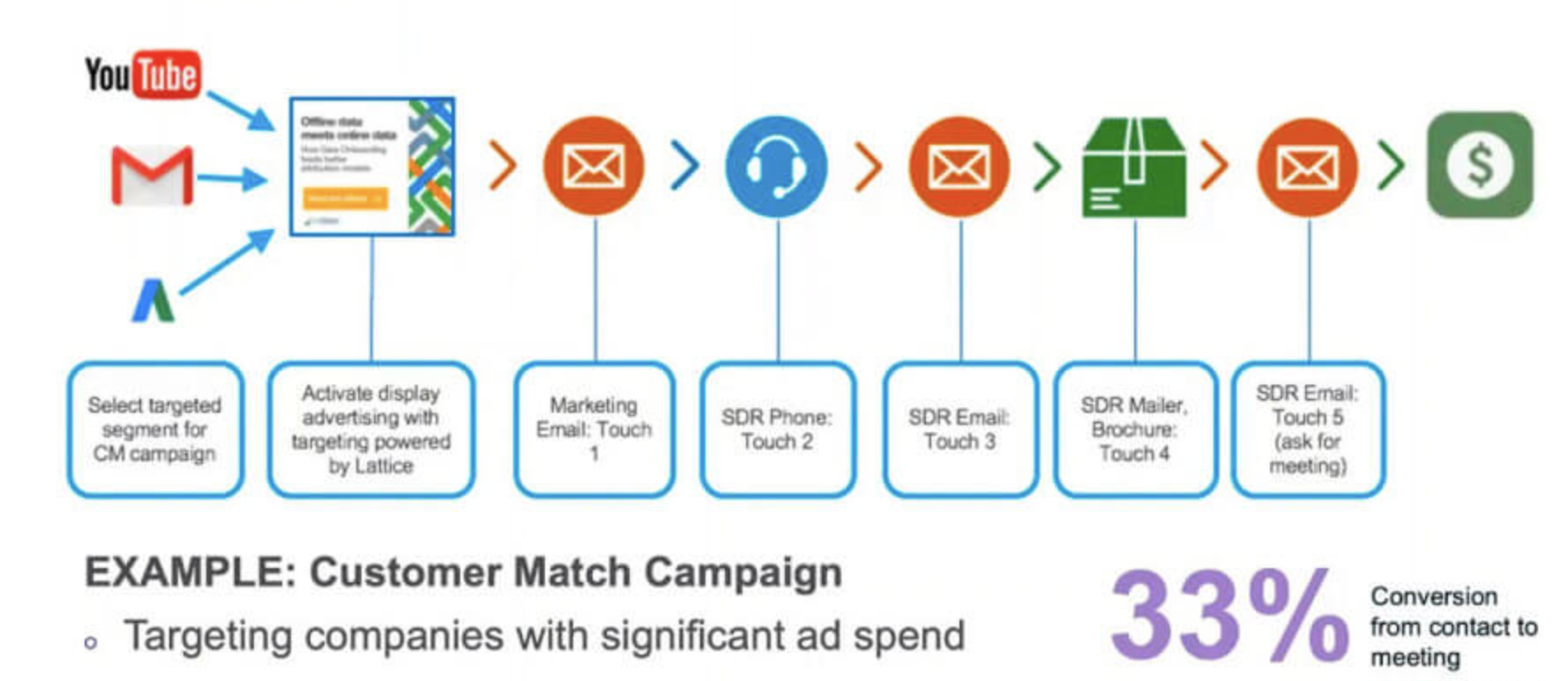
Armed with rich account insight, the next step is to engage your target decision-makers with coordinated, multi-touch campaigns across channels. Effective ABM is not about a single tactic, but rather an integrated approach to surrounding key accounts with personalized outreach at every stage of the buying journey.
Map relevant content and interactions to each major touchpoint in the customer lifecycle. This includes targeted advertising, personalized website and landing page experiences, direct mail and email nurture streams, executive events and briefings, social and community engagement, and sales outreach. Design plays that leverage the right mix of channels and content types to drive target accounts forward.
Advances in marketing technology make it easier than ever to deliver 1:1 experiences at scale. For example, at a global communications provider I worked with, we used AI and machine learning to dynamically personalize web content and next-best-actions based on an account's industry, firmographics, and real-time behavior. This led to a 60%+ increase in page views and time spent on our ABM site.
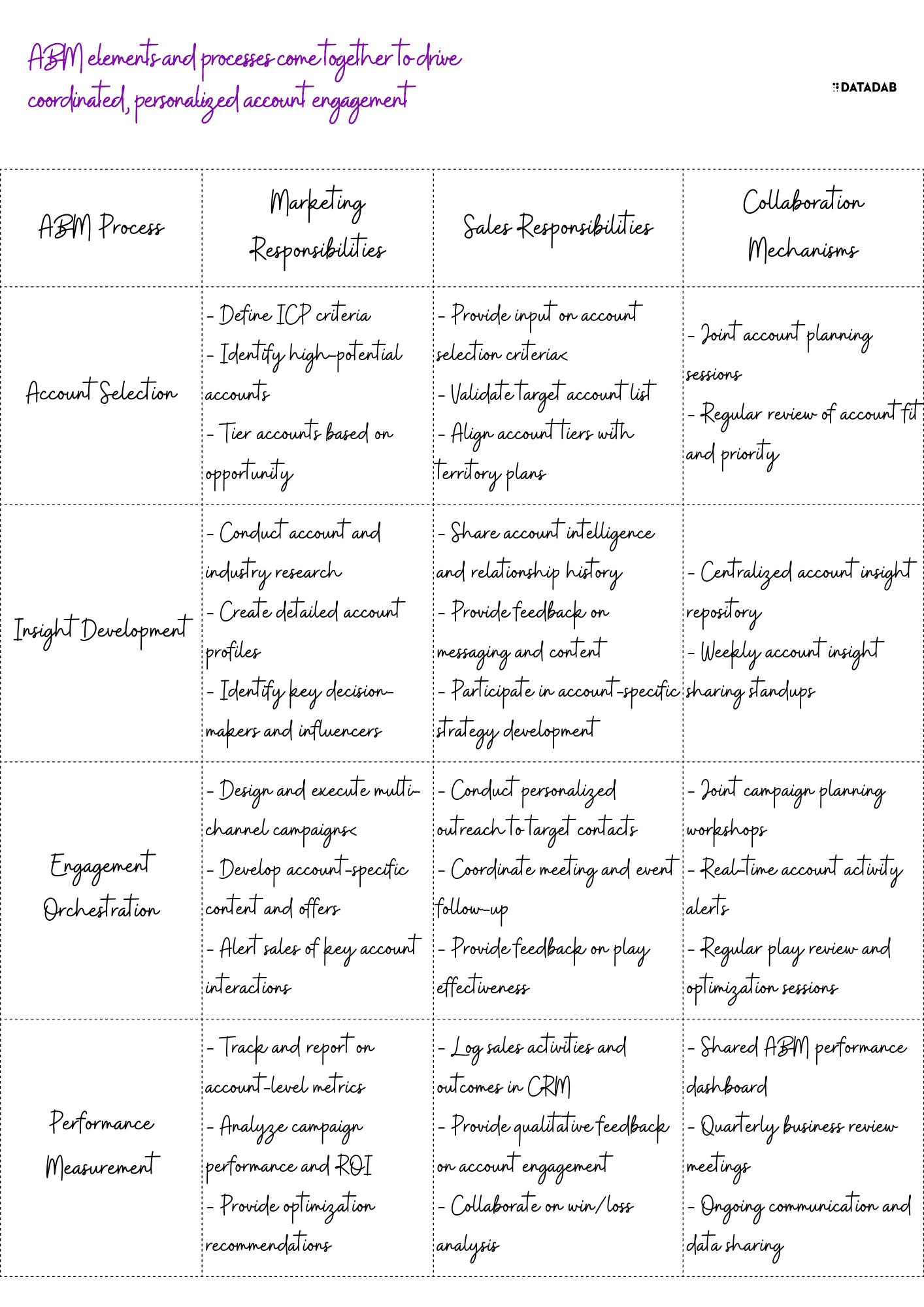
Aligning Sales and Marketing Around ABM Objectives
Tight sales and marketing alignment is critical to ABM success. After all, the ultimate goal is to drive more pipeline and revenue from target accounts, not just generate top-of-funnel activity. Marketing and sales must work hand-in-hand to engage accounts in a coordinated fashion across the buyer's journey.
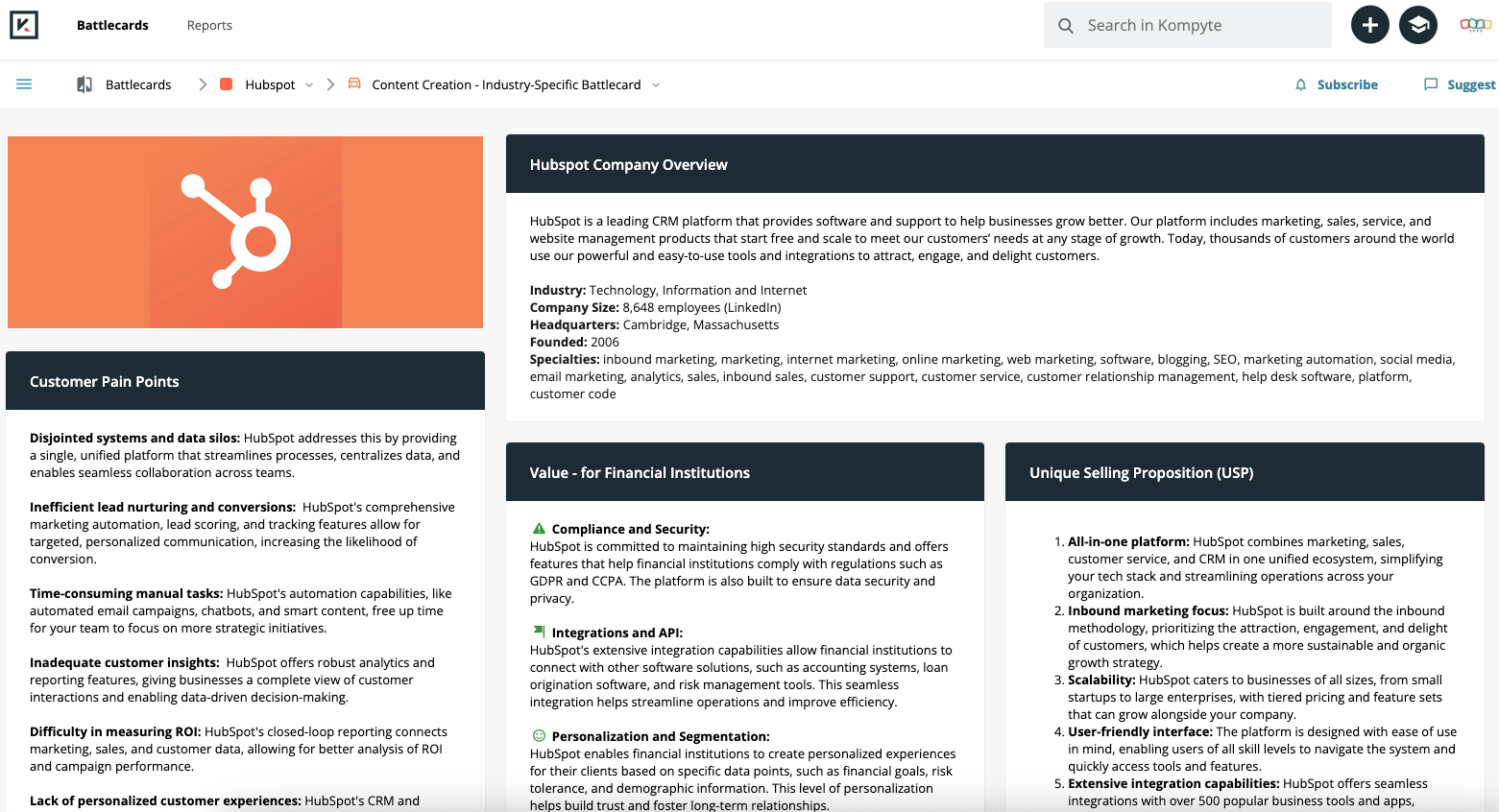
Develop a joint go-to-market strategy with sales leadership to define key accounts, revenue goals, and engagement tactics. Agree on lead qualification criteria, handoff processes, and SLAs for each ABM tier. Collaborate on account plans, content, and plays. Use a shared view of account data and interactions to enable seamless lead handoffs and ongoing orchestration.
When I led an ABM program for a mid sized IT services firm, we embedded ABM marketers directly into strategic account teams to support reps with bespoke campaigns, content, and thought leadership tailored to each major pursuit. Through weekly stand-ups and QBRs, we kept sales and marketing in lockstep and were able to jump on opportunities in real-time. As a result, we grew ACVs 25% and improved win rates in our top 50 accounts.
Measuring and Optimizing ABM Performance
Finally, to demonstrate impact and continually improve, you need an account-based lens for tracking and optimizing program performance. Look beyond aggregate lead metrics to measure account-level engagement, pipeline velocity, deal size, win rates, and post-sale growth. Calculate campaign ROI based on the lifetime value of accounts influenced.

Track leading indicators like content engagement, time on site, email opens, and meeting completions to get an early read on whether your ABM efforts are resonating. Use A/B tests and attribution analysis to identify the campaigns and tactics that are moving the needle with your ICP. Double down on what's working and proactively optimize underperforming initiatives.
| ABM Metric | Definition | Measurement Approach | Optimization Tactics |
|---|---|---|---|
| Account Engagement | Interactions with target accounts across channels | - Website visits - Content downloads - Email opens and clicks - Meeting bookings |
- A/B test content and offers - Personalize web experience - Refine account segmentation |
| Pipeline Velocity | Speed at which target accounts move through the sales funnel | - Average days in each stage - Conversion rates between stages |
- Identify bottlenecks - Align sales and marketing plays - Provide relevant content at each stage |
| Account Win Rate | Percentage of engaged target accounts that become customers | - Deals won / Deals in pipeline | - Analyze win/loss reasons - Coach reps on industry-specific objection handling - Engage key decision-makers earlier |
Successful ABM measurement requires cross-functional coordination and data sharing. Integrate account activity and revenue data from your MA, CRM, and sales enablement systems to get a holistic picture of ABM performance. For example, the best-in-class ABM teams I've led use advanced multi-touch attribution to understand the sales and marketing touches driving business outcomes across key accounts. These granular performance insights enable us to accurately assess campaign ROI and make smart optimization decisions.
ABM can be an incredibly powerful strategy for driving engagement, relationships, and revenue with your most valuable accounts. But generic playbooks will only get you so far. True ABM success lies in developing a thoughtful, customized approach that reflects your industry's distinct attributes, accounts, and stakeholders.
By applying the techniques we've explored for account identification, insight development, multi-channel orchestration, sales partnership, and measurement, you can craft uniquely relevant account experiences that set your business apart. So start putting these ideas into practice. Tailor them to your specific context. And begin realizing the enormous potential of an ABM strategy built from the ground up around your market and targets. The companies that do will be the ones that win in the years ahead.
FAQ
1. What is account-based marketing (ABM)?
Account-based marketing is a strategic approach that focuses on identifying, engaging, and converting a specific set of high-value accounts rather than targeting a broader market or industry.
2. Why should I create an industry-specific ABM strategy?
Developing an ABM strategy tailored to your specific industry allows you to create hyper-relevant content, messaging, and experiences that resonate with your target accounts' unique needs, challenges, and priorities. This leads to deeper engagement, faster sales cycles, and higher win rates.
3. How do I identify and prioritize high-potential accounts for ABM?
Start by defining your Ideal Customer Profile (ICP) based on firmographic, technographic, and behavioral attributes. Then, use a combination of account scoring, intent data, and sales input to identify and tier accounts based on their fit, engagement, and revenue potential.
4. What are the key components of an effective account insight development process?
To develop rich account insights, conduct in-depth research on each target account's business objectives, challenges, competitive landscape, and organizational structure. Interview sales reps, analyze account interactions, and monitor industry trends to inform your messaging and content strategy.
5. How can I orchestrate personalized, multi-channel ABM campaigns at scale?
Leverage a combination of account-specific data, marketing automation, and ABM technology to deliver tailored content, ads, and experiences across channels. Use dynamic personalization, retargeting, and trigger-based plays to engage accounts with relevant messaging at every stage of the buying journey.
6. What are some best practices for aligning sales and marketing around ABM efforts?
Establish a joint ABM leadership council to define shared goals, strategies, and tactics. Develop a clear process for account handoffs, data sharing, and play coordination. Equip sales with account-specific insights, content, and enablement tools to drive consistent, relevant outreach.
7. How should I measure and optimize the performance of my industry-specific ABM programs?
Track a combination of account engagement, pipeline velocity, win rates, and revenue metrics to assess the impact of your ABM efforts. Use multi-touch attribution to understand the influence of different touchpoints on key outcomes. Continuously test, analyze, and refine your plays based on performance data and feedback.
8. What are some common challenges with implementing an industry-specific ABM strategy?
Some common obstacles include difficulty getting buy-in from leadership, siloed data and systems, inconsistent account data quality, and limited resources for personalization at scale. Overcome these by building a strong business case, investing in data governance and integration, and leveraging technology to automate key processes.
9. How long does it typically take to see results from an industry-specific ABM program?
While timelines vary based on your industry, targets, and tactics, most companies start seeing measurable improvements in account engagement and pipeline within 3-6 months of launching an ABM program. Focus on quick wins and optimization in the early stages to demonstrate value and gain momentum.
10. What skills and resources do I need to succeed with industry-specific ABM?
To excel with ABM, you need a combination of strategic planning, account insight development, omnichannel campaign execution, sales alignment, and performance analysis skills. Invest in training, technology, and partnerships to fill key gaps and scale your efforts over time.


